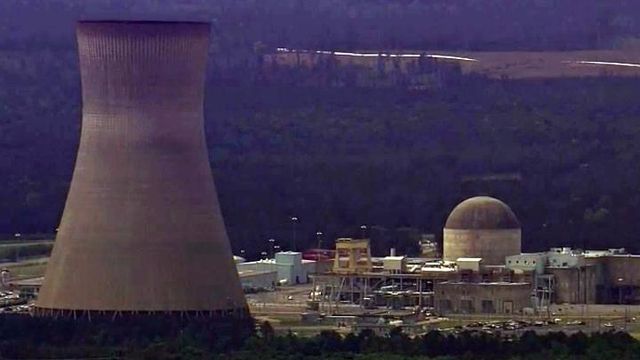Crack forces shutdown of nuclear reactor at Shearon Harris
A quarter-inch crack in a reactor sensor at the Shearon Harris nuclear plant in southwest Wake County has forced Duke Energy to take the plant offline, officials said Thursday.
Posted — UpdatedNo radioactive material leaked from the plant, and public health and safety is not in danger, spokeswoman Kim Crawford said.
"There are no indications that there was any leakage," Crawford said. "We made the conservative decision to take the unit offline and make the repair."
Crawford said she couldn't say how long the reactor would be out of commission, but she said the utility has plenty of capacity and wouldn't need to purchase electricity from outside sources to meet demand.
"We're not anticipating any issues," she said. "While our plant is offline, we'll continue to serve our customers."
Shearon Harris provides power to about 550,000 customers, and industry sources said not operating the reactor could cost Duke about $1 million a day.
According to information Duke filed with the Nuclear Regulatory Commission, ultrasonic tests of the reactor were taken a year ago when Shearon Harris was taken offline for refueling. A secondary review of those tests this week revealed the "primary water stress corrosion cracking" on a temperature sensor near where cooling rods attach to the reactor head.
"Initial evaluation indicates that the flaw is not through wall, and there is no evidence of leakage based on inspections performed on the top of the reactor vessel head during the spring 2012 refueling outage," the NRC event report states.
Without repairs, a small crack could widen and allow water that keeps the reactor cool to escape, putting the plant at risk of a meltdown and possible release of radiation.
The NRC plans to send someone to Shearon Harris to review the situation with Duke officials.
Such cracking is common for aging nuclear plants, according to the NRC, but agency officials and others question why Duke and Progress Energy, which operated Shearon Harris before being acquired by Duke last July, waited a year before addressing the issue.
"To have a crack in a reactor vessel head that went undetected for at least a year, that's very troubling," said Jim Warren, executive director of utility watchdog NC WARN, a frequent critic of Duke and Progress.
"My concern is the industry hasn't solved this particular problem. We've known about this (issue) for well over 10 years," Warren said.
He attributed the delay in repairing the Shearon Harris crack to "some sort of breakdown in procedures."
"What they're going to find when they're able to get in there and look more closely will be of great interest to the public," he said.
The NRC will hold an annual public meeting and question-and-answer session Monday to discuss the NRC review and take questions from the public. The meeting will begin at 5 p.m. at the Holly Springs Cultural Center, at 300 West Ballentine St.
Duke was forced to mothball a nuclear plant in Florida in February, more than three years after Progress Energy, which Duke acquired last July, took it offline because of cracks.
The Crystal River plant was closed in the fall of 2009 after a crack was found in the outer layer of the containment building's concrete wall. While trying to repair the problem in 2011, crews cracked other portions of the wall, and officials said repairing the damage might have cost more than $3 billion.
• Credits
Copyright 2024 by Capitol Broadcasting Company. All rights reserved. This material may not be published, broadcast, rewritten or redistributed.





